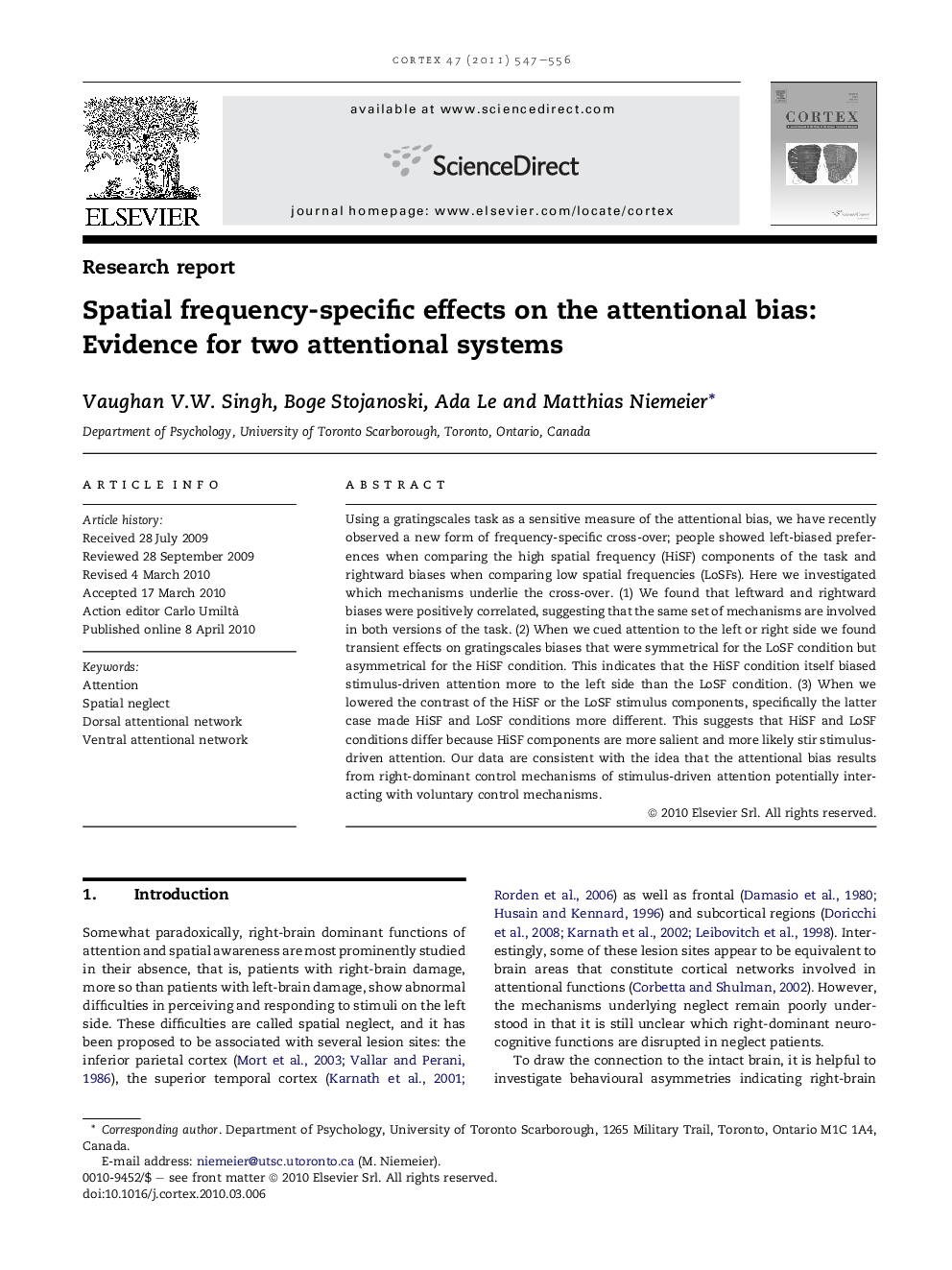| Article ID | Journal | Published Year | Pages | File Type |
|---|---|---|---|---|
| 942406 | Cortex | 2011 | 10 Pages |
Using a gratingscales task as a sensitive measure of the attentional bias, we have recently observed a new form of frequency-specific cross-over; people showed left-biased preferences when comparing the high spatial frequency (HiSF) components of the task and rightward biases when comparing low spatial frequencies (LoSFs). Here we investigated which mechanisms underlie the cross-over. (1) We found that leftward and rightward biases were positively correlated, suggesting that the same set of mechanisms are involved in both versions of the task. (2) When we cued attention to the left or right side we found transient effects on gratingscales biases that were symmetrical for the LoSF condition but asymmetrical for the HiSF condition. This indicates that the HiSF condition itself biased stimulus-driven attention more to the left side than the LoSF condition. (3) When we lowered the contrast of the HiSF or the LoSF stimulus components, specifically the latter case made HiSF and LoSF conditions more different. This suggests that HiSF and LoSF conditions differ because HiSF components are more salient and more likely stir stimulus-driven attention. Our data are consistent with the idea that the attentional bias results from right-dominant control mechanisms of stimulus-driven attention potentially interacting with voluntary control mechanisms.
